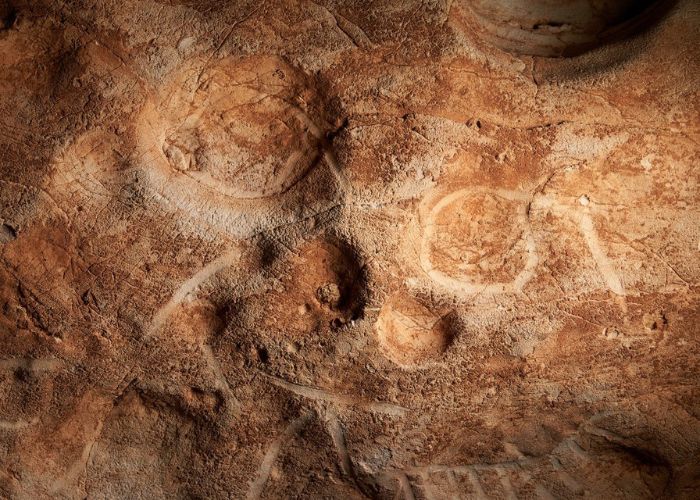Archaeologists and cave explorers in northeastern Spain have made a stunning discovery. They excavated more than 100 prehistoric engravings in a cave known as Cova de la Vila (Tarragona).
The engravings, arranged on an eight-metre panel, offer an exceptional window into the world view of the first farmer societies during the Chalcolithic-Bronze age.
The archaeologists described the discovery as “exceptional, both for their singularity and for their excellent state of conservation”. These depictions found in the Mediterranean underground gallery include representations of different figures of quadrupeds, zigzags, linear, angular and circular lines, and a series of zoomorphics (possibly bovids and equines), star shapes and reticular lines.
The discovery of the cave art constitutes “one of the few representations of underground schematic art in the entire Mediterranean Arc,” according to the regional government of Catalonia.
“A historic milestone for prehistoric archaeology”
Furthermore, the cave had already been explored in the 1940s. However, it its location had been lost until a group of cave explorers rediscovered it on May 13, 2021. Among the explorers was Juli Serrano. To his surprise, he saw a “mural full of lines and figures”. And he felt “a very great emotion, which I will take with me for life.” IPHES researchers later analysed the engravings and called the discovery a “historic milestone for prehistoric archaeology.”
Related post: Unique discovery in cave in Southern Spain rewrites history of Europeans
The panel of engravings is structured along five horizontal lines, one on top of the other. Each contains different engraved figures that have their own meaning and symbolism. According to IPHES specialist Ramón Viñas, the composition is an “absolutely unusual” one that indicates “a worldview on the part of the populations of the territory during the neolithisation process.”
Symbolic meaning
The cave art was made “exclusively with the engraving technique,” using a stone or wooden tool or directly with fingers, and is “stylistically very homogeneous,” indicating a symbolic meaning, explained Viñas.
To guarantee its conservation, the regional government has therefore closed access to Sala dels Gravats (Engravings Room). Furthermore, work is underway to create a 3D model of the cave. This discovery sheds new light on the history of prehistoric societies. Moreover, it offers a glimpse into the artistic and symbolic expressions of our ancestors.
Related post: The Cave of Altamira – prehistoric art


